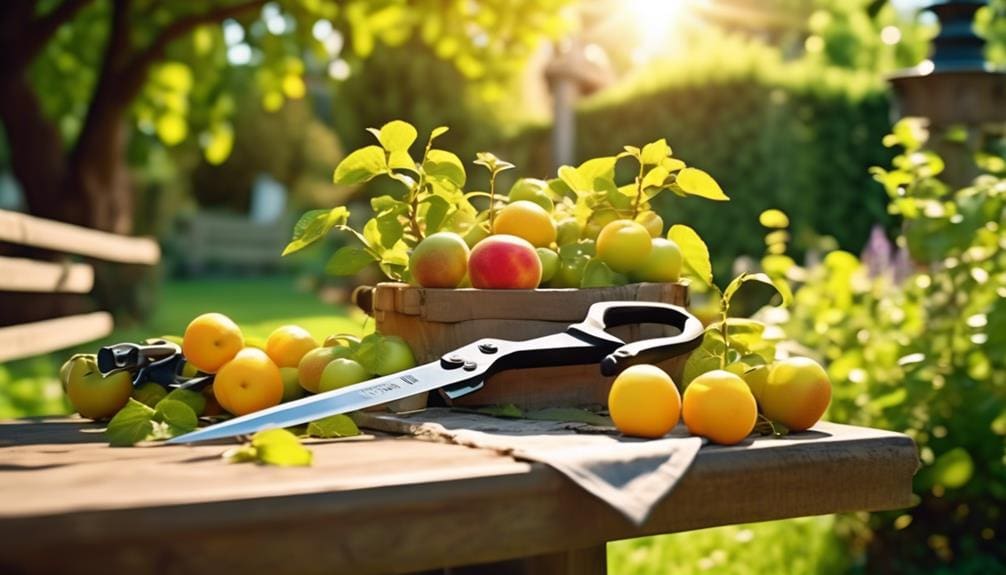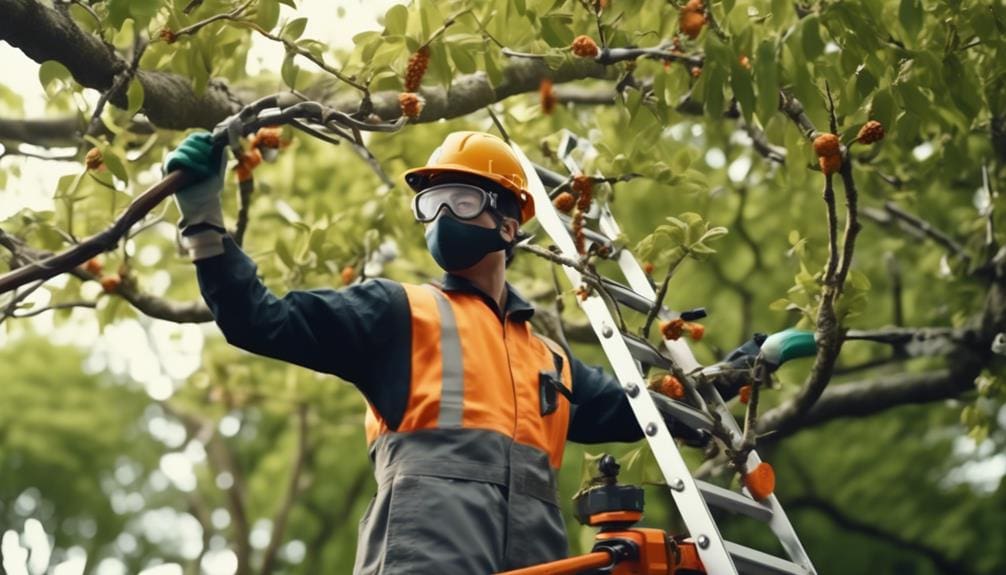Tree Trimming
Prime Time for Tree Pruning
As we enter the winter months in Dallas, we’ve noticed that many homeowners begin to prepare their trees for the season ahead. It’s widely accepted that the colder months offer an opportune time for pruning since trees are often in a dormant state, which can minimize stress and promote better healing.
However, there’s more to consider than just the season when deciding on the prime time to prune. Different species of trees, the specific climate conditions of the year, and the health of the tree can all influence the timing and method of pruning. We understand these factors are crucial for maintaining a healthy landscape, and we’re here to share our knowledge on how to identify the best time to prune your trees.
As we explore the intricacies of tree pruning, we invite you to consider how the timing of this activity can affect the long-term health and aesthetics of your trees.
Key Takeaways
- Pruning during the dormant season, specifically late winter before new growth starts, is ideal for enhancing tree health and minimizing sap loss.
- Deciduous trees should be pruned during late winter when they are leafless, allowing for clear sightlines and identification of branches to trim.
- Summer pruning is beneficial for shaping and sculpting trees during their vigorous growth phase, encouraging new growth and optimizing yield and bloom in fruit and flowering trees.
- Proper selection and maintenance of pruning tools, along with adherence to safety precautions, are crucial for effective and safe pruning practices.
Understanding Growth Cycles
To optimize tree health and growth, it’s crucial to align pruning practices with the tree’s specific growth cycle stages. Trees have distinct growth cycles that greatly influence when we should wield our pruning shears. By understanding these cycles, we’re equipped to make strategic pruning cuts that encourage new, robust growth.
For many species, the dormant months of late winter provide an ideal window just before the surge of early spring growth. During this period, the absence of leaves allows us to assess the tree’s structure more clearly and make precise cuts that will invigorate the tree for the upcoming growing season. This timing is critical for the health of the tree, as it minimizes stress and maximizes the tree’s response to our tree care efforts.
Benefits of Dormant Pruning
Pruning trees during their dormant season offers numerous benefits, from enhancing tree health to reducing the likelihood of disease and pest problems. We’ve found that the best time to prune, particularly for deciduous trees, is in late winter, just before new growth starts. This timing is crucial for a few reasons:
- Visibility: Leafless tree branches allow for clear sightlines, making it easier to identify which branches to trim.
- Reduced Stress: Dormant pruning in winter minimizes sap loss, helping trees recover quickly.
- Disease Prevention: Fewer active pests and diseases in winter decrease the chances of infestation.
- Stronger Growth: By removing unwanted branches, we encourage healthier and more robust growth in the spring.
Through these technical but vital steps, we ensure our trees are set free to thrive.
Summer Pruning Advantages


While we often emphasize the importance of dormant pruning, summer pruning also plays a crucial role in maintaining tree health and aesthetics by allowing us to sculpt trees during their most vigorous phase of growth. Executed in early summer, it encourages new growth while shaping fruit trees and flowering trees for optimal yield and bloom.
By removing dead or broken branches, we not only enhance the tree’s overall growth pattern but also prevent the spread of disease. Summer pruning’s targeted cuts allow us to direct growth, fostering a balanced canopy and ensuring sunlight reaches the lower branches. Moreover, it curbs the risk of excessive sap flow, a common issue with cuts made outside the summer months.
We ensure our trees aren’t only healthy but remain visually stunning.
Selecting the Right Tools
Selecting the appropriate tools is essential when aiming to prune trees effectively and safely. As we dive into tree pruning, let’s equip ourselves with the right arsenal:
- Hand Pruners: Ideal for trimming small branches; ensure they’re sharp for clean cuts.
- Loppers: Perfect for thicker branches, up to 2 inches in diameter, to remove without strain.
- Pruning Saws: When faced with large damaged branches, these are your go-to tools for precise cuts.
- Pole Pruners: For the Best Time to Trim those hard-to-reach areas safely from the ground.
We’ve got to make sure our tools are sharp and clean to minimize harm to the trees. It’s worth consulting a Certified Arborist if we’re unsure about the correct techniques or tools for specific pruning tasks.
Safety Tips for Pruning


Having equipped ourselves with the proper tools, we must now focus on adhering to safety protocols to protect ourselves and the trees during the pruning process. We’ll don appropriate gear—gloves, eye protection, sturdy footwear—to prevent injuries. It’s essential to survey the surroundings for hazards like overhead lines or structures that could complicate the task.
Sharp, well-maintained tools are crucial for proper pruning, ensuring cuts made are clean and close to the branch collar without damage. We’ll carefully remove dead or rubbing branches, particularly when working on lower branches or mature trees, to prevent harm to people and property. For those unsure of safe practices, the Extension Service offers guidance.
Always be mindful of falling debris and secure your position—safety is paramount.
Conclusion
In conclusion, we recognize that winter presents an optimal period for pruning trees in Dallas. By capitalizing on dormant cycles, we reduce stress and enhance recovery.
Although summer pruning has its merits, it’s imperative we choose appropriate tools and adhere to safety protocols. Proper technique is crucial for successful wound compartmentalization.
We advise seeking expert advice to ensure trees remain robust and healthy. Pruning isn’t just maintenance; it’s a science that, when executed correctly, can lead to thriving urban forests.


Hello there! I’m Logan Foster, the green-thumbed social media marketer behind the vibrant world of 1800TreeGuy.com. With roots firmly planted in arboriculture, I’ve branched out to help clients cultivate their dream outdoor spaces, one leafy canopy at a time. My knack for nurturing nature is more than a profession—it’s a way of life.
When I’m not talking trees and teaching the art of arboreal care, you can find me cheering on the Bulldogs—my alma mater’s pride and my forever team. My environmental studies there didn’t just teach me about ecosystems; they instilled a lifelong passion for protecting our planet.
Off the clock, I’m an adventurer at heart. Whether it’s trekking the Appalachian trails, pedaling down a mountain path, or crafting guides to share the wonders of the wild, I’m happiest with soil under my nails and the sun on my face. And let’s not forget Yoda, my pug sidekick. He may not have mastered the art of stillness, but his joyful grins are my daily dose of happiness.
I’m all about making connections—between people and the great outdoors and between my clients and their ideal landscape visions. My approach is personal; every tree has a story, and every garden reflects its caretaker.
If you want to green your scene or share in my outdoor escapades, give me a shout on Instagram or Facebook. Let’s cultivate a conversation and grow a community rooted in a love for the lush life.







